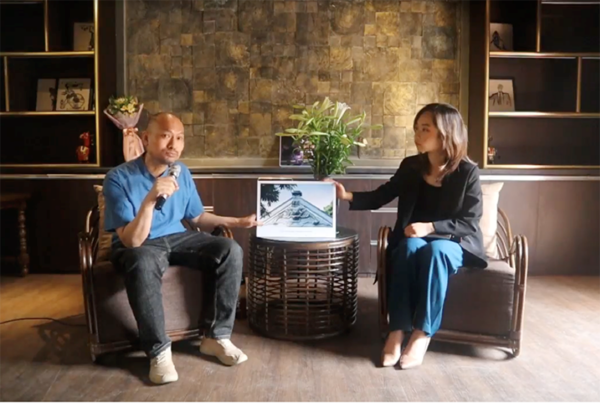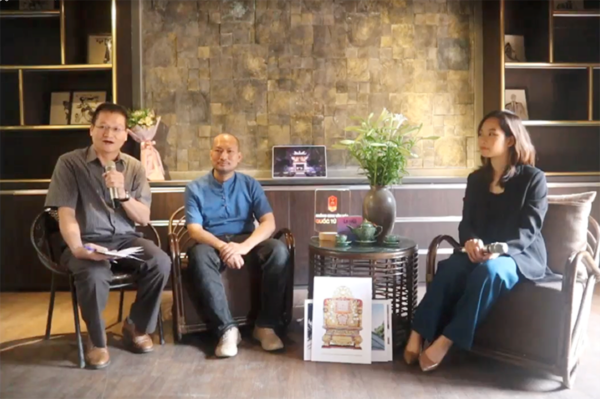The talk gave the audience an overview of the formation and development history of La Hau in the world’s ancient art and belief culture, as well as in Vietnam’s ancient culture and architecture. In Vietnamese folk beliefs since ancient times, La Hau’s face has been one of the most ferocious images, often created with embossed parts, to represent ferocity and strength. The La Hau is always seen from the front with the round demon eyes, a lion nose, antler horns, animal ears, flattened cheeks, a bared mouth and wide jaw holding the moon or the “Tho” (Longevity) word, two legs spread out to the sides and clinging to clouds.

Associate Professor Dr. Tran Hau Yen The talked at the seminar.
After many years of research, Doctor of Fine Arts Theory and History Tran Hau Yen The said that La Hau was the most furious face in Vietnamese art. That face is still often called “Ho Phu” or “Long Ham Tho”. In comparison to the Vietnamese gods and animals system, La Hau was formed relatively late, beginning with the Le Trung Hung period and prospering under the Nguyen Dynasty. However, this image was popular in most of the religious spaces from communal houses, temples, shrines, to ceremonial items such as palanquin thrones, incense altars, stone steles and so on. The La Hau image contributed to affirm that the traditional decorative art of Vietnam in general and the decorative art of architecture of the Nguyen Dynasty in particular having special values, expressing the character and soul of the nation.
According to Associate Professor Dr. Dinh Hong Hai (Hanoi National University), the La Hau image in Vietnamese folklore beliefs has been strongly affected by two great civilizations, India and China. It might be said that the La Hau image was the result of the interweaving of two Chinese and Indian aesthetic systems, which helped to affirm the traditional decorative art of Vietnam in general and the decorative art of architecture of the Nguyen Dynasty in particular. At the same time, it brought unique ideals that reflected the nation’s spirit and soul.

Associate Professor Dr. Dinh Hong Hai discussed the La Hau image at the talk show.
Associate Professor Dr. Dinh Hong Hai mentioned an ancient story about La Hau, to see that this was a character who, after “committing a crime and being educated,” had changed mind to protect the law and was considered as a guardian deity, put into many religious works, worshiping objects by craftsmen. Thus, the La Hau image was one of the features that vividly expressed the cultural exchange that had been Vietnameseized and crystallized into traditional cultural values, the Vietnamese quintessence, through time.
The Seminar provides the public with a comprehensive overview of the history of the formation and development of La Hau in the world’s ancient art and belief culture, as well as in Vietnam’s ancient culture and architecture; the La Hau images are propagated in folk life, as well as the image’s vitality in modern cultural life. The event also provides an opportunity for everyone to study in depth about the nation’s fundamental ideals, as well as the improvisations and emergence of the traditional quintessence over the country’s long history.
Thuy Nguyen

